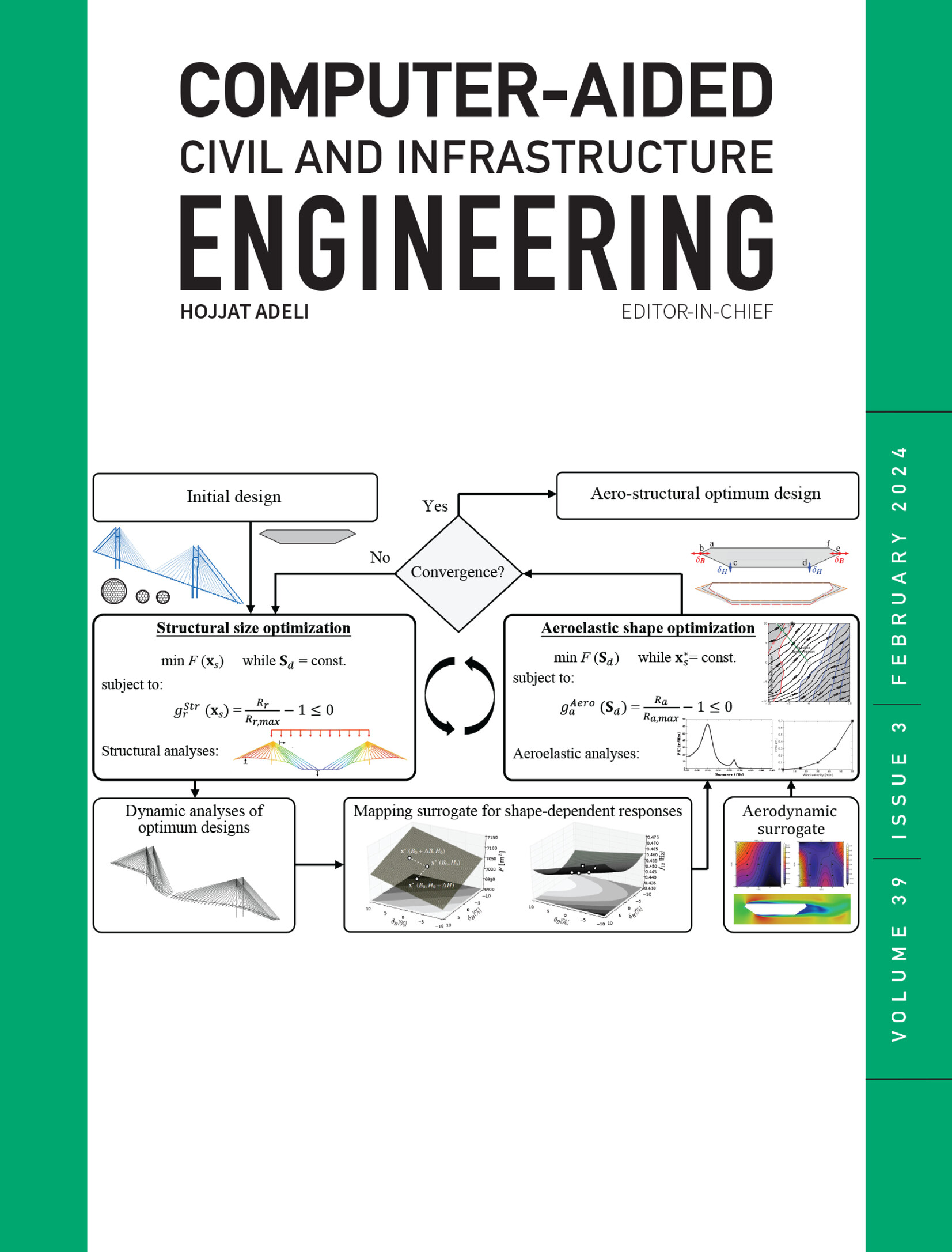基于多分辨率分析和在线学习的隧道掘进机推力实时预测
IF 9.1
1区 工程技术
Q1 COMPUTER SCIENCE, INTERDISCIPLINARY APPLICATIONS
引用次数: 0
摘要
本研究引入了一种新的实时隧道掘进机(TBM)推力预测集成框架,解决了处理非平稳性、复杂时空依赖性和突发性干扰的关键限制。首先,提出了一个实时加窗的多分辨率分析过程,该过程在每个分割的样本窗口内严格进行分解,以明确地解开嵌入在推力数据中的潜在多尺度依赖关系。这确保了严格的因果关系(仅使用当前/历史数据),防止信息泄漏,并通过捕获特定于每个数据段的本地动态来增强分辨率适应性,克服了全局平均效应。其次,提出了一种将静态混合模型与动态在线残差校正相结合的新型协同预测体系结构。一个特别优化的CNN - LSTM -注意力初级模型学习复杂的长期全局模式。至关重要的是,基于随机傅立叶特征的高效在线模块专门用于实时学习主模型的残差动态,充当动态校正器而不是独立预测器。这种有针对性的残差校正显著增强了对非平稳性和干扰的鲁棒性。这些创新形成了一个集成的解决方案,系统地解决了实时能力、局部适应性、复杂模式学习和动态纠错。结果表明,该方法将平均绝对百分比误差从2.84%降低到1.89%,从0.901提高到0.953。通过应用沿线不同路段的不同数据集,进一步验证了模型的泛化性。提出的基于机器学习的模型可以为施工过程中掘进机参数的实时调整提供指导本文章由计算机程序翻译,如有差异,请以英文原文为准。
Real‐time prediction of tunnel boring machine thrust based on multi‐resolution analysis and online learning
This study introduces a novel integrated framework for real‐time tunnel boring machine (TBM) thrust prediction, addressing critical limitations in handling non‐stationarity, complex spatiotemporal dependencies, and abrupt disturbances. First, a real‐time windowed multi‐resolution analysis process, which performs decomposition strictly within each segmented sample window, is presented to explicitly disentangle the latent multi‐scale dependencies embedded in the thrust data. This ensures strict causality (using only current/historical data), prevents information leakage, and enhances resolution adaptability by capturing local dynamics specific to each data segment, overcoming global averaging effects. Second, a novel synergistic prediction architecture, integrating a hybrid static model with dynamic online residual correction, is proposed. A specifically optimized CNN‐LSTM‐attention primary model learns complex long‐term global patterns. Crucially, an efficient random Fourier features‐based online module is dedicated solely to real‐time learning of the primary model's residual dynamics, acting as a dynamic corrector rather than an independent predictor. This targeted residual correction significantly enhances robustness against non‐stationarity and disturbances. These innovations form an integrated solution and systematically address real‐time capability, local adaptability, complex pattern learning, and dynamic error correction. The results indicate that the presented method reduces the mean absolute percentage error from 2.84% to 1.89% and increased from 0.901 to 0.953. The generalizability of the model was further confirmed through the application of diverse datasets obtained from various chainages along the route. The proposed machine learning–based model can provide guidance for operators in real‐time TBM parameter adjustment during construction
求助全文
通过发布文献求助,成功后即可免费获取论文全文。
去求助
来源期刊
CiteScore
17.60
自引率
19.80%
发文量
146
审稿时长
1 months
期刊介绍:
Computer-Aided Civil and Infrastructure Engineering stands as a scholarly, peer-reviewed archival journal, serving as a vital link between advancements in computer technology and civil and infrastructure engineering. The journal serves as a distinctive platform for the publication of original articles, spotlighting novel computational techniques and inventive applications of computers. Specifically, it concentrates on recent progress in computer and information technologies, fostering the development and application of emerging computing paradigms.
Encompassing a broad scope, the journal addresses bridge, construction, environmental, highway, geotechnical, structural, transportation, and water resources engineering. It extends its reach to the management of infrastructure systems, covering domains such as highways, bridges, pavements, airports, and utilities. The journal delves into areas like artificial intelligence, cognitive modeling, concurrent engineering, database management, distributed computing, evolutionary computing, fuzzy logic, genetic algorithms, geometric modeling, internet-based technologies, knowledge discovery and engineering, machine learning, mobile computing, multimedia technologies, networking, neural network computing, optimization and search, parallel processing, robotics, smart structures, software engineering, virtual reality, and visualization techniques.

 求助内容:
求助内容: 应助结果提醒方式:
应助结果提醒方式:


